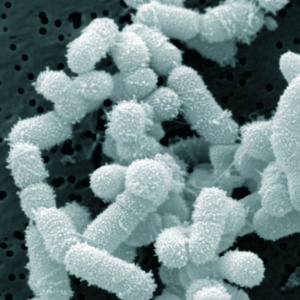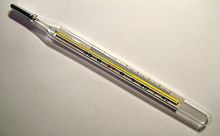 Nice summary of cancer prevention advice. What it boils down to is that there is no magic bullet for cancer prevention (maybe the closest thing is to NOT smoke), but it's a lot of little things adding up (your lifestyle) that lowers the risk of cancer. From The Washington Post:
Nice summary of cancer prevention advice. What it boils down to is that there is no magic bullet for cancer prevention (maybe the closest thing is to NOT smoke), but it's a lot of little things adding up (your lifestyle) that lowers the risk of cancer. From The Washington Post:
Looking for that fruit or vegetable that might prevent cancer?
Blueberries. Green tea. Tomatoes. And, oh, that cruciferous cauliflower. All make the lists of super foods that might help prevent cancer. Then there are the foods such as smoked meat and fried foods that supposedly might cause cancer. Such information is standard fare for TV doctors and Web sites, but most of us don’t know how to judge such claims. What sounds authoritative may not be. Only about half of the recommendations on two internationally syndicated TV medical talk shows were supported by scientific evidence, according to a recent study in the journal BMJ.
Of course, the blueberries we eat today are good for us. But nutrition’s role in cancer prevention is much more complex than a single dietary component: Evidence has mounted, for example, that lifestyle — diet, weight control and exercise — is vital in helping reduce risk. For now, experts endorse general dietary advice that is healthful for a variety of chronic diseases and conditions, rather than reductionist thinking that focuses on single foods or nutrients.
When you hear that a certain food helps prevent cancer, ask: Which cancer? “Cancer is multiple diseases,” said Marian Neuhouser, a nutritional epidemiologist at the Fred Hutchinson Cancer Research Center in Seattle. Whereas cardiovascular disease might be broken down into several types, including myocardial infarction, stroke and peripheral vascular disease, she said, “for cancer, it’s really over 100 different diseases.” “Cancer is a very complex, very challenging disease to study whether you’re looking at it on the cell level or the clinical level or the epidemiologic and preventive level,” Willett said.
Researchers caution about overreacting to a single study. New findings come out every week, but “we never take any one study to be the answer to anything,” said Nancy Potischman, a nutritional epidemiologist at the National Cancer Institute. Only if the same results come up in multiple studies across multiple populations, “then you might think that, yes, this food might be important,” she said.
Tobacco use remains the leading preventable cause of cancer incidence and death worldwide. After tobacco, the lifestyle trio of diet, weight control and exercise may be linked to one-third to two-thirds of cancers. “They’re inseparable,” Neuhouser said. “You can have a great diet and you can have a healthy weight, but if you’re extremely sedentary then there’s a risk.”And there’s a strong link between excess weight and several kinds of cancer, including the esophagus, breast (after menopause), endometrium, colon and rectum, kidney, pancreas, thyroid, gallbladder, according to the NCI.
Evidence mounts about how lifestyle may affect risk of cancer. In the largest study of its kind, nearly half a million Americans were evaluated for adherence to American Cancer Society cancer prevention guidelines that include smoking avoidance; a healthful, consistent weight; physical activity; limiting alcohol; and a diet emphasizing plants.
Those who followed the guidelines most closely had lowered risk of developing cancer (10 percent for men, 19 percent for women) and dying from cancer (25 percent for men, 24 percent for women) compared with those whose habits were least in line with the guidelines. Most striking was the reduction of overall risk of dying: 26 percent for men, 33 percent for women during the 14-year study period.
Fourteen types of cancer seemed affected by lifestyle behavior, most particularly gallbladder, endometrial, liver and colorectal. For men and women, a healthful weight and physical activity were the top factors in reduced deaths overall. Albert Einstein College of Medicine Researchers published this analysis online in January in the American Journal of Clinical Nutrition, based on data from a National Institutes of Health/AARP study.
Another approach to cancer and nutrition considers dietary patterns. “What we eat on any one day is not going to change our cancer risk, but it’s the pattern over the long term.” Neuhouser said. Several diets that emphasized fruit, vegetables, whole grains and plants or plant-based proteins were analyzed against information collected over more than 12 years from nearly 64,000 post-menopausal women in the Women’s Health Initiative Observational Study. Consuming a high-quality diet was associated with lower death rates from chronic diseases including cancer, as reported last year in the American Journal of Epidemiology.
The bacteria, viruses and other organisms that live in and on humans seem to play a bigger role in health and disease than was previously understood, Freudenheim said. How the countless microbes in such areas as the gut and the mouth might contribute to or prevent cancers is one of the open questions in the new area of study of the microbiome, which refers to the many organisms in the body, 10 percent of which are human and 90 percent nonhuman.

 Much discussion about the link between gut bacteria and liver cancer, as well as the link between inflammation and cancer. Gut microbiome imbalances can cause health harms.
Much discussion about the link between gut bacteria and liver cancer, as well as the link between inflammation and cancer. Gut microbiome imbalances can cause health harms. This recent scientific (and yes, technical) article discusses the tantalizing promise of treating cancer, especially melanoma, with infections and certain vaccines. Much discussion of how two vaccines that are already out there may prevent some cancers such as melanoma and leukemia (vaccination with Bacille Calmette-Guerin (BCG) of newborns and vaccination with the yellow fever 17D vaccine of adults).This recent article is a further development on what was discussed in the last post (Injecting a person with a bacterial extract - called Coley's toxins or Coley toxins - to cause an infection, and so treat cancer). From BioMed Central:
This recent scientific (and yes, technical) article discusses the tantalizing promise of treating cancer, especially melanoma, with infections and certain vaccines. Much discussion of how two vaccines that are already out there may prevent some cancers such as melanoma and leukemia (vaccination with Bacille Calmette-Guerin (BCG) of newborns and vaccination with the yellow fever 17D vaccine of adults).This recent article is a further development on what was discussed in the last post (Injecting a person with a bacterial extract - called Coley's toxins or Coley toxins - to cause an infection, and so treat cancer). From BioMed Central: